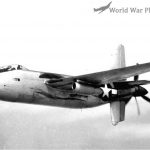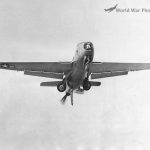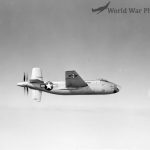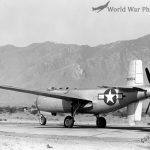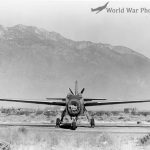43-50224 during testing
Mixmaster after conversion
XB-42A with Westinghouse 19XB-2A axial-flow turbojets
Mixmaster take-off
XB-42 in flight
Rear view
Nose view
In 1943, led by Ed F. Burton, the Douglas Works design team began work on an attack aircraft for the USAAF. The aircraft was to have an original design with two engines in a push-pull arrangement with counter-rotating propellers located in the fuselage, providing a high top speed, and all armament was to be housed in the nose or fuselage bomb bay. The project was initially carried out entirely on its own, at Douglas’ initiative.
In May, a preliminary design was presented to the USAAF, which became interested in the high-speed attack aircraft concept and commissioned the development of two flying prototypes and one adapted for ground trials. The machine received the designation XA-42 and the name Mixmaster.
It was assumed that three configuration versions of the aircraft would enter service, armed with either 16 0.50 in (12.7 mm) machine guns, a 75mm cannon and either two 0.50 in (12.7 mm) machine guns or two 37mm cannons. In all cases, the armament was to be located in the nose. While it was in the works, in November 1943 the USAAF changed the aircraft’s designation to XB-42, which also meant a change in designation from an attack aircraft to a bomber.
In the new configuration, the machine was to receive an internal bomb bay and defensive armament in the wings, pointing rearward (in addition, two machine guns were to be installed in the wings and point forward). The nose of the aircraft, meanwhile, was converted into a bombardier/navigator position. The prototype aircraft was completed very quickly, and as early as May 6, 1944, the machine took to the air, with test pilot Bob Brush at the controls. The first tests of the prototype were successful, and the performance met all expectations. Only minor aerodynamic problems were noted, requiring improvements in the design of the bomb bay, the stabilizer and the air intakes located in the wings, which were inefficient, causing the engines to overheat. On August 1, 1944, a second prototype took to the air, with new engines installed. Unfortunately, the machine crashed on December 16 during one of its test flights.
Testing of the XB-42 proceeded smoothly, but as the situation on the fronts changed and the end of the war approached, the progress slowed down. After the end of World War II, further trials of the bomber version of the aircraft were abandoned. Instead, the only working prototype was rebuilt, installing Westinghouse 19XB-2A turbojet engines under the wings. The new configuration gave the aircraft the designation XB-42A, and its first flight took place on May 27, 1947.
After a series of 22 flights and spending 17 hours in the air, the machine was damaged on landing on August 15, 1948. After repairs, flights were not resumed, and on June 30, 1949, the entire program was shut down. The prototype then went to the National Museum of the United States Air Force in Dayton. However, the experience from the work on the aircraft was used to work on the XB-43 design.

